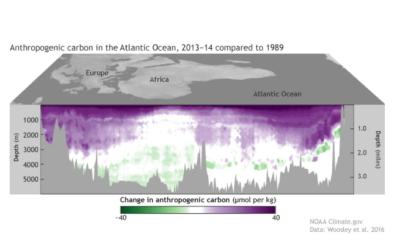Science Source
Historical baselines and the future of shell calcification for a foundation species in a changing ocean
The California mussel is a common species along the entire west coast of the United States, and their fate will be linked to that of a rich diversity of predators, including sea stars and sea otters, as well as myriad species that are part of the mussel bed habitat. It is imperative that we understand more about how these species will change as ocean conditions change.
Cathy Pfister, PhD, professor of ecology and evolution at the University of Chicago and lead author
- States that seawater pH and the availability of carbonate ions are decreasing due to anthropogenic carbon dioxide emissions, posing challenges for calcifying marine species
- States that marine mussels are of particular concern given their role as foundation species worldwide
- Documents shell growth and calcification patterns in Mytilus californianus, the California mussel, over millennial and decadal scales
- Compares shell thickness across the largest modern shells, the largest mussels collected in the 1960s–1970s and shells from two Native American midden sites (∼1000–2420 years BP)
- Finds that modern shells are thinner overall, thinner per age category and thinner per unit length
- Concludes the largest individuals of this species are calcifying less now than in the past
- Finds shell thickness in smaller individuals over the past 10–40 years, however, do not show significant shell thinning
- Notes that given the sampling strategy used, the results are unlikely to simply reflect within-site variability or preservation effects
- Reviews environmental and biotic drivers known to affect shell calcification, which suggest that declining ocean pH is a likely explanation for the observed shell thinning
- Finds that further future decreases in shell thickness could have significant negative impacts on M. californianus survival and, in turn, negatively impact the species-rich complex that occupies mussel beds
Related Content
Headline

Jun 6, 2018 | NOAA Climate.gov
Cruises cut a slice through the Atlantic's carbon pie
Science Source
| Nature Climate Change
Detecting regional anthropogenic trends in ocean acidification against natural variability
T. Friedrich, A. Timmermann, A. Abe-Ouchi et al
Science Source
| Biogeosciences
Using present-day observations to detect when anthropogenic change forces surface ocean carbonate chemistry outside preindustrial bounds
Sutton, Adrienne J., Sabine et al
Science Source
| Estuaries and Coasts
Is Ocean Acidification an Open-Ocean Syndrome? Understanding Anthropogenic Impacts on Seawater pH
Carlos M. Duarte, Iris E. Hendriks, Tommy S. Moore et al


